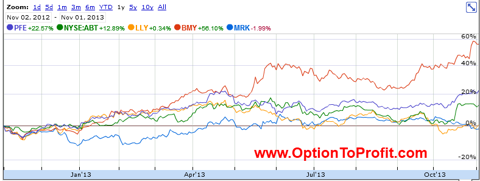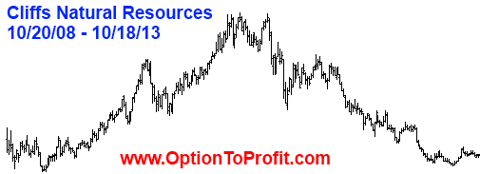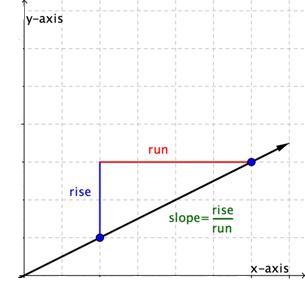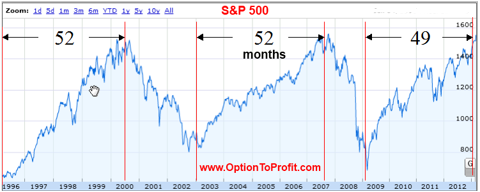 Some things are just unappreciated until they’re gone.
Some things are just unappreciated until they’re gone.
If you can remember those heady days of 2007, it seemed as if every day we were hitting new market highs and everyone was talking about it when not busy flipping houses.
Some will make the case that is the perfect example of a bubble about to burst, similar to when a bar of gold bullion appears on the cover of TIME magazine, just in time to mark the end of a bull run.
On the other hand, when everyone is suddenly talking about perhaps currently being in a bubble it may be a good time to plan for even more of a good thing.
That’s emblematic of the confusion swirling in our current markets. Earnings are up. Better than expected by most counts, yet revenues are down. The stock market can do only one thing and so it goes higher.
In case you haven’t been paying attention, 2013 has been a year of hitting record after record. Yet the buzz is absent, although house flipping is back. Not that I go to many social events but not many are talking about how wild the market has been. That’s markedly different from 2007.
Listening to those who purport to know about human behavior and markets, that means that we are not yet in a stock market bubble and as such, the market will only go higher, yet that’s at odds with the rampant bubble speculation that is being promoted in some media.
I’m a little more cynical. I see the paucity of excitement as being reflective of investors who have come to believe that consistently higher markets are an entitlement and have subsequently lost their true value. No one seems to appreciate a new record setting close, anymore. The belief in the right to a growing portfolio is no different from the right to use a calculator on an exam. Along with that right comes the loss of ability and appreciation of that ability.
Without spellchecker, the editors at Seeking Alpha would have a hard time distinguishing me from a third grader, but spelling really isn’t something I need to due. It’s just done for me.
While many were unprepared in 2007 because they were caught up in a bubble, 2013 may be different. In 2007 the feeling was that it could only get better and better, so why exercise caution? But in 2013 the feeling may be that there is nothing unusual going on, so what is there to be cautious about?
AS markets do head higher those heights are increasingly met with ennui instead of wonder and awe. It’s barely been more than five years since we last felt the wrath of an over-extended market but I’m certain that the new daily records will be missed once they’re gone.
As a normally cautious person when it comes to investing, but not terribly willing to sacrifice returns for caution my outlook changes with frequency as new funds find their way into my account after the previous week’s assignment of options I had sold.
This past week I didn’t have as many assignments as I had expected owing to some late price drops on Friday, so I’m not as likely to go on a spending spree this coming week, as I don’t want to dig deeply into my cash reserve. This week I’m inclined to think more in terms of dividend paying stocks and relatively few higher beta names, although opportunity is situational and Monday morning’s opening bell may bring surprise action. I appreciate surprise and for the record, I appreciate every single bit of share appreciation and income that comes my way as a gift from this market.
As usual, the week’s potential stock selections are classified as being in Traditional, Double Dip Dividend, Momentum and “PEE” categories this week (see details).
I currently own shares of MetLife (MET) and have done so several times this year. MetLife reported earnings this past week. They reported a nearly $2 billion turnaround in profits, but missed estimates, despite strength in every metric. They re-affirmed that a lower interest rate environment, as might be expected with a continuation of Quantitative Easing, could impact its assets’ performance in the coming year. That was the same news that created a buying opportunity in the previous quarter, so it should not have come as too much of a surprise. What did, however come as a surprise was the announcement that MetLife would no longer be offering earnings per share guidance. According to its CEO “we will instead expand our discussion of key financial metrics and business drivers, creating a more informed view of MetLife’s future prospects.” The price drop and it’s ex-dividend date this week make it a likely candidate for using my limited funds this week.
I’ve long believed that Robert ben Mosche, CEO of AIG (AIG) was something of a saint. Coming out of comfortable retirement in Croatia to attempt an AIG rescue, he continued on his quest even while battling cancer and still found the time to re-pay AIG’s very sizeable debt to US taxpayers. Who needs that sort of thing when you can live like royalty off the Mediterranean coast?
AIG was punished after reporting earnings this past week. It’s hard to say whether the in line earnings, but slightly lower revenue was to blame for the nearly 7% drop or whether joining forces with MetLife was to blame. Not that they literally joined forces, it’s just that ben Mosche announced that AIG will no longer comment on its “aspirational goals,” which was a way of saying that they too were no longer going to provide guidance. I haven’t owned shares in 2 months and that was at a lower price point than even after the large Friday drop, but I think the opportunity has re-arrived.
Wells Fargo (WFC) goes ex-dividend this week and as much as I’ve silently prayed for its share price to drop back to levels that I last owned them, it just hasn’t worked out that way. To a large degree Wells Fargo has stayed above the various banking controversies and has deflected much of the blame and scrutiny accorded others. At some point it becomes clear that prices aren’t likely to drop significantly in the near term, so it may be time to capitulate and get back on the wagon. However, what does give me some solace is that shares have trailed the S&P 500 during the three time frames that I have been recently using, each representing a near term top of the market; May 21, August 2 and September 19, 2013.
In the world of big pharma, Merck (MRK) has shared in little of the price strength seen by some others. In fact, of late, the
best Merck has been able to do to prompt its shares higher have all come on the less constructive side of the ledger. Only the announcement of workforce reductions and other cost cutting steps have been viewed positively.
 But at some point a value proposition is created which isn’t necessarily tied to pipelines or other factors pertinent to long term price health. In this case, a quick 7% price drop is enough to warrant consideration of a company paying an attractive dividend and offering appealing enough option premiums to sustain interest in shares even if they stagnate while awaiting the next price catalysts. Besides, if you’re selling covered calls, there’s nothing better than share price stagnation.
But at some point a value proposition is created which isn’t necessarily tied to pipelines or other factors pertinent to long term price health. In this case, a quick 7% price drop is enough to warrant consideration of a company paying an attractive dividend and offering appealing enough option premiums to sustain interest in shares even if they stagnate while awaiting the next price catalysts. Besides, if you’re selling covered calls, there’s nothing better than share price stagnation.
What is a week without drawing comparisons between Michael Kors (KORS) and Coach (COH)? Coach has become everyone’s favorite company to disparage, although on any given day it may exchange places with Caterpillar. Kors, is of course, the challenger that has displaced Coach in the hearts of investors and shoppers. Having sold Coach puts in advance of earnings and then purchasing shares even after those expired, those were assigned this past week. However, at this price level Coach is still an appealing covered option purchase and well suited for a short term strategy, even if there is validity to the thesis that it is ceding ground to Kors.
Kors, on the other hand, is doing everything right, including entering the S&P 500. It’s hard not to acknowledge its price ascent, even after a large secondary offering. While I know nothing of fashion and have no basis by which to compare Coach and Kors, I do know that as Kors reports earnings this week the option market is implying approximately 7.5% price move in either direction. However, anything less than a 10% decline in price can still deliver a 1% ROI
Williams Companies (WMB) is one of those companies that seems to fly under the radar. Although I’ve owned shares many times there has never been a reason compelling me to do so on the basis of its business fundamentals. Instead, ownership has always been prompted by an upcoming dividend or a sudden price reversal. In this case I just had shares assigned prior to earnings, which initially saw a big spike in price and then an equally large drop, bringing it right back to the level that I have found to be a comfortable entry point.
Riverbed Technology (RVBD) reported earnings last week and I did not purchase additional shares or sell puts, as I thought I might. Too bad, because the company acquitted itself well and shares moved higher. I think that shares are just starting and while RIverbed Technology has probably been my most lucrative trading partner over the years, purely on the basis of option premiums, this time around I am unlikely to write call options on all new shares, as I think $18 is the next stop before year end, particularly if the overall market doesn’t correct.
What can anyone add to the volumes that have been said about Apple (AAPL) and Intel (INTC)? Looking for insights is not a very productive endeavor, as the only new information is likely to currently exist only as insider information. Both are on recent upswings and both have healthy dividends that get my attention because of their ex-dividend dates this week. Intel offers nothing terribly exciting other than its dividend, but has been adding to its price in a stealth fashion of late, possibly resulting in the assignment of some of my current shares that represent one of the longest of my holdings, going back to September 2012. While I have always liked Intel it hasn’t always been a good covered call stock because when shares did drop, such as after earnings, the subsequent price climbs took far too long to continually be able to collect option premiums. However, without any foreseeable near term catalysts for a significant price drop it offers some opportunities for a quick premium, dividend and perhaps share appreciation, as well.
Finally, in its short history of paying dividends Apple’s shares have predominantly moved higher after going ex-dividend, although there was one notable exception. Given the factors that may be supporting Apple’s current price levels, including pressure from activist investors and Apple’s own buybacks, I’m not overly concerned about the single historical precedence and think that the triumvirate of option premium, dividend and share appreciation makes it a good addition to even a conservative portfolio.
Traditional Stocks: AIG, Merck, Williams Companies
Momentum Stocks: Coach, Riverbed Technology
Double Dip Dividend: Apple (ex-div 11/6), Intel (ex-div 11/5), MetLife (ex-div 11/6), Wells Fargo (ex-div 11/6)
Premiums Enhanced by Earnings: Michael Kors (11/5 AM)
Remember, these are just guidelines for the coming week. The above selections may become actionable, most often coupling a share purchase with call option sales or the sale of covered put contracts, in adjustment to and consideration of market movements. The overriding objective is to create a healthy income stream for the week with reduction of trading risk.


 With the S&P 500 having reached an all time high this past week you could certainly draw the conclusion that a government shutdown is a good thing and flirting with default is a constructive strategy. At a reported cost of only $24 Billion associated with closure and nothing more than a symbolic “Fitch slap” credit watch issued, perhaps we should look forward to the next potential round in just a few months.
With the S&P 500 having reached an all time high this past week you could certainly draw the conclusion that a government shutdown is a good thing and flirting with default is a constructive strategy. At a reported cost of only $24 Billion associated with closure and nothing more than a symbolic “Fitch slap” credit watch issued, perhaps we should look forward to the next potential round in just a few months.

 To summarize: The New York Post rumors, “The Dark SIde” and the FOMC.
To summarize: The New York Post rumors, “The Dark SIde” and the FOMC.




